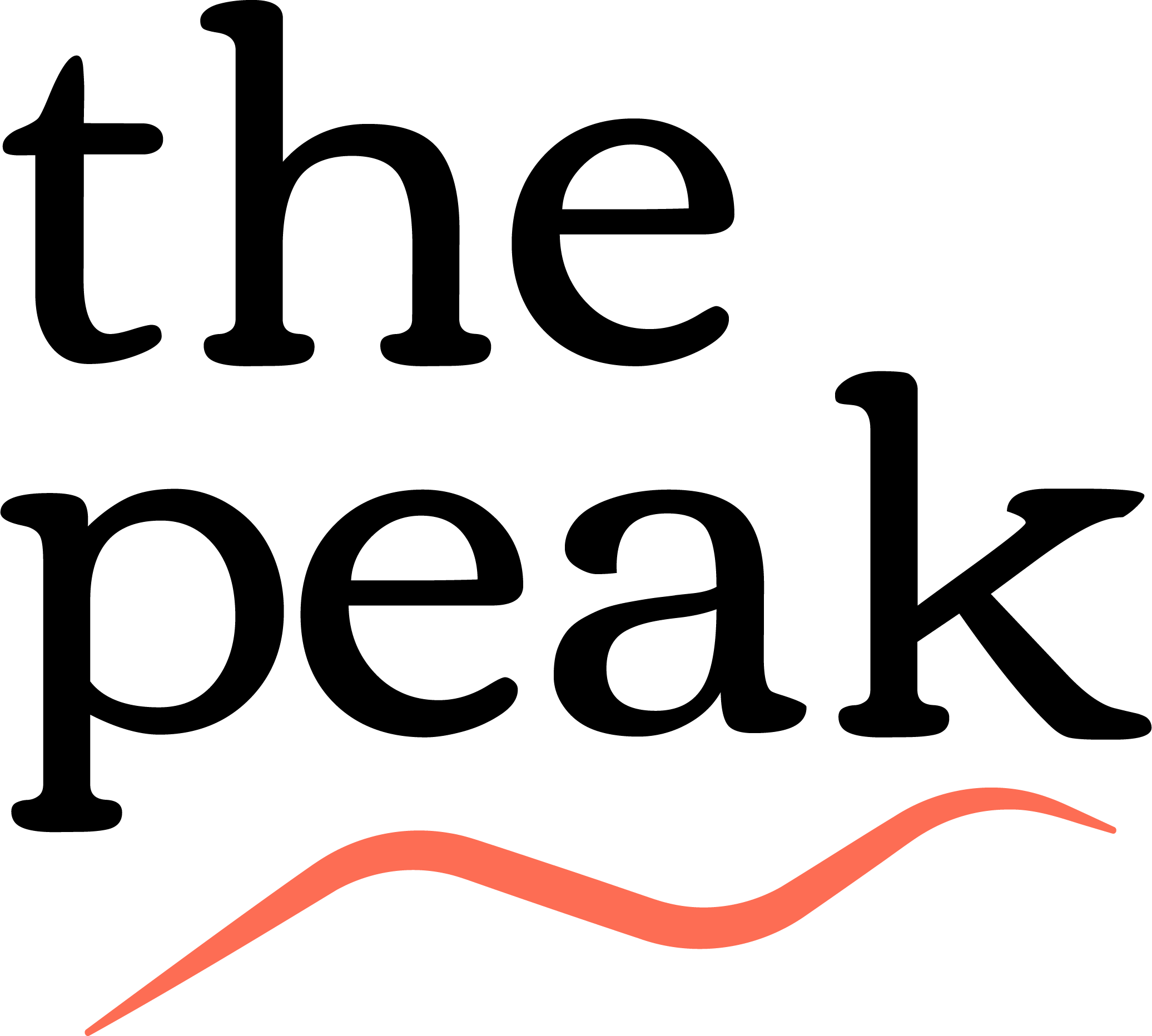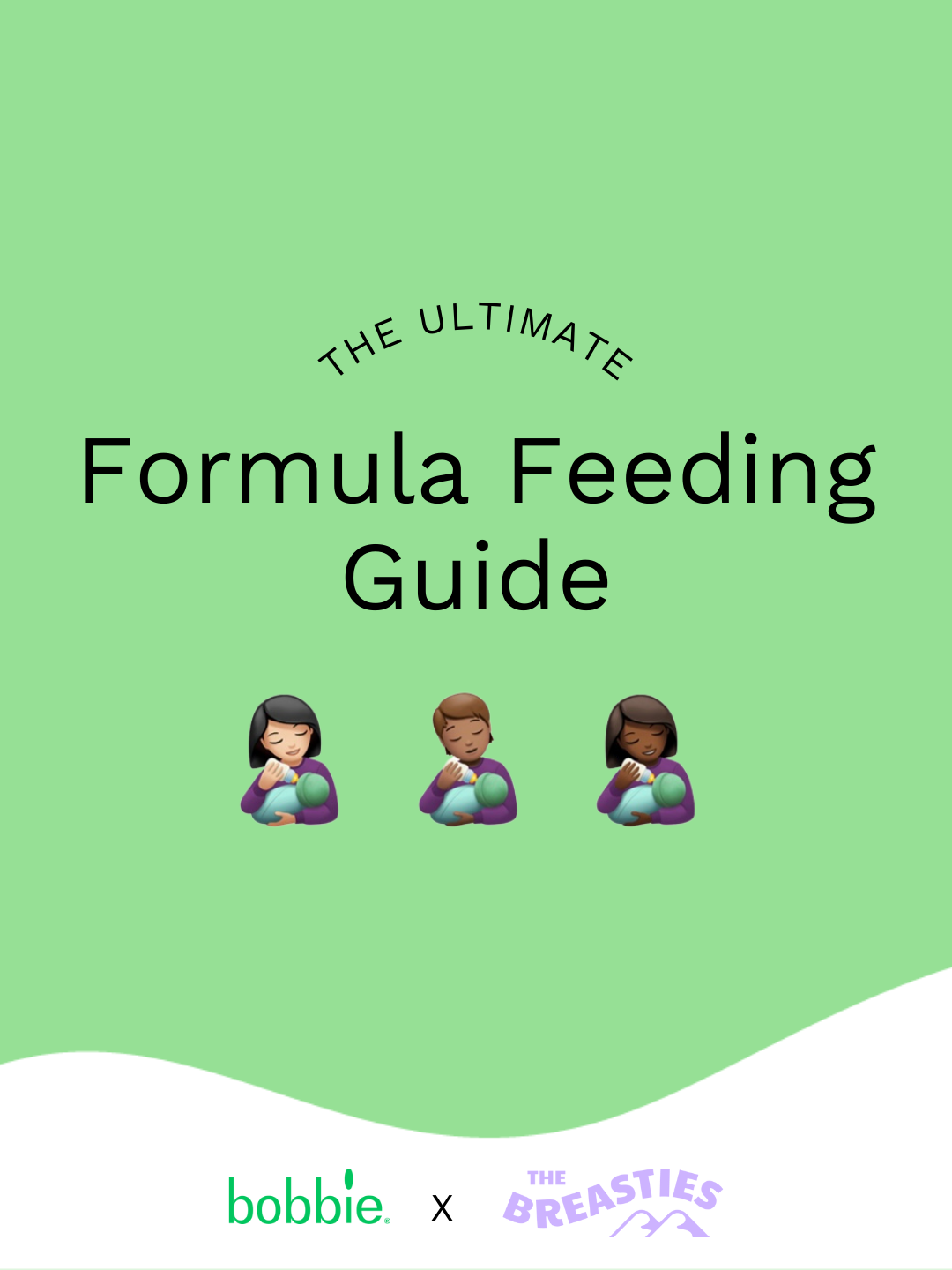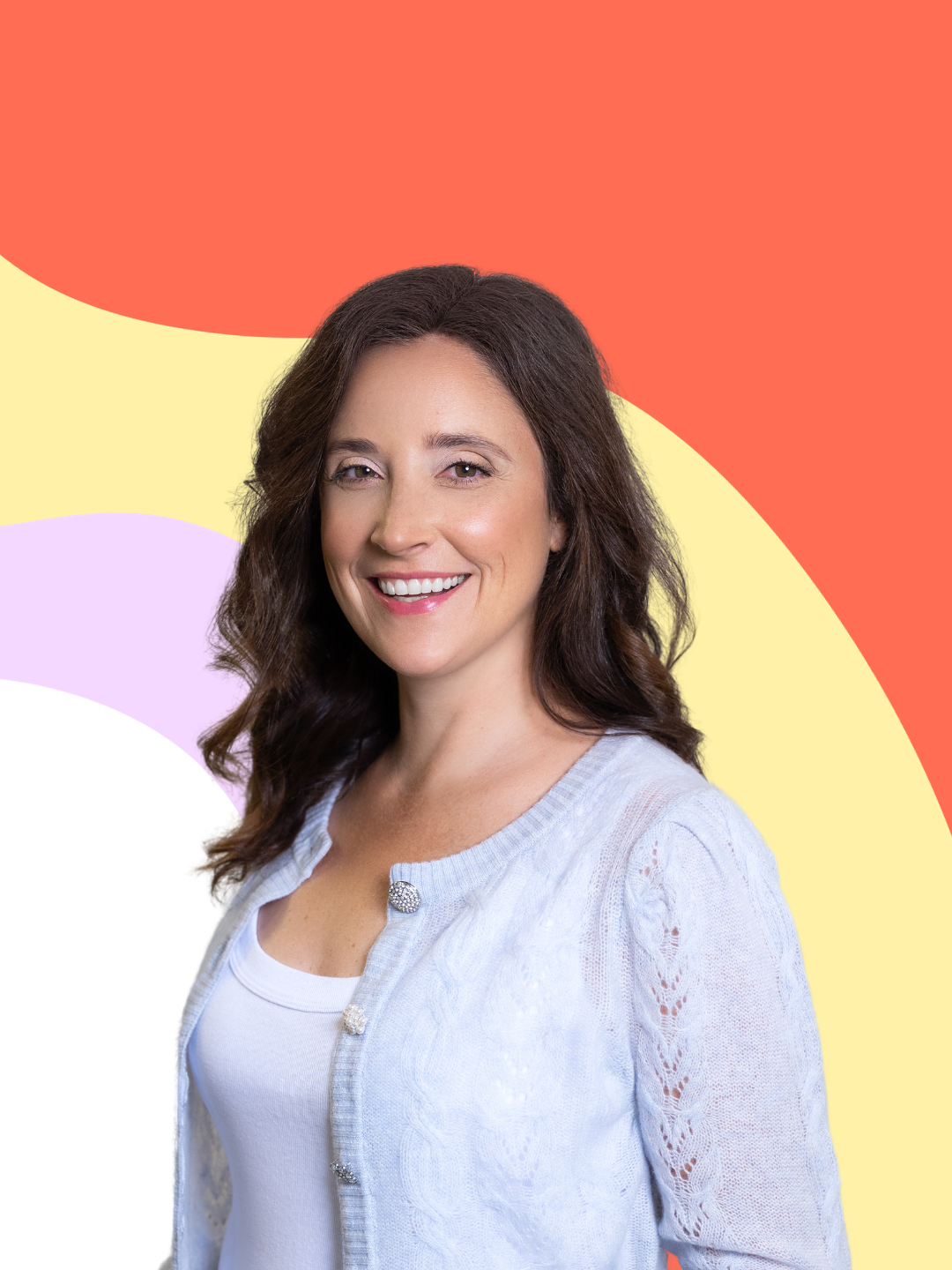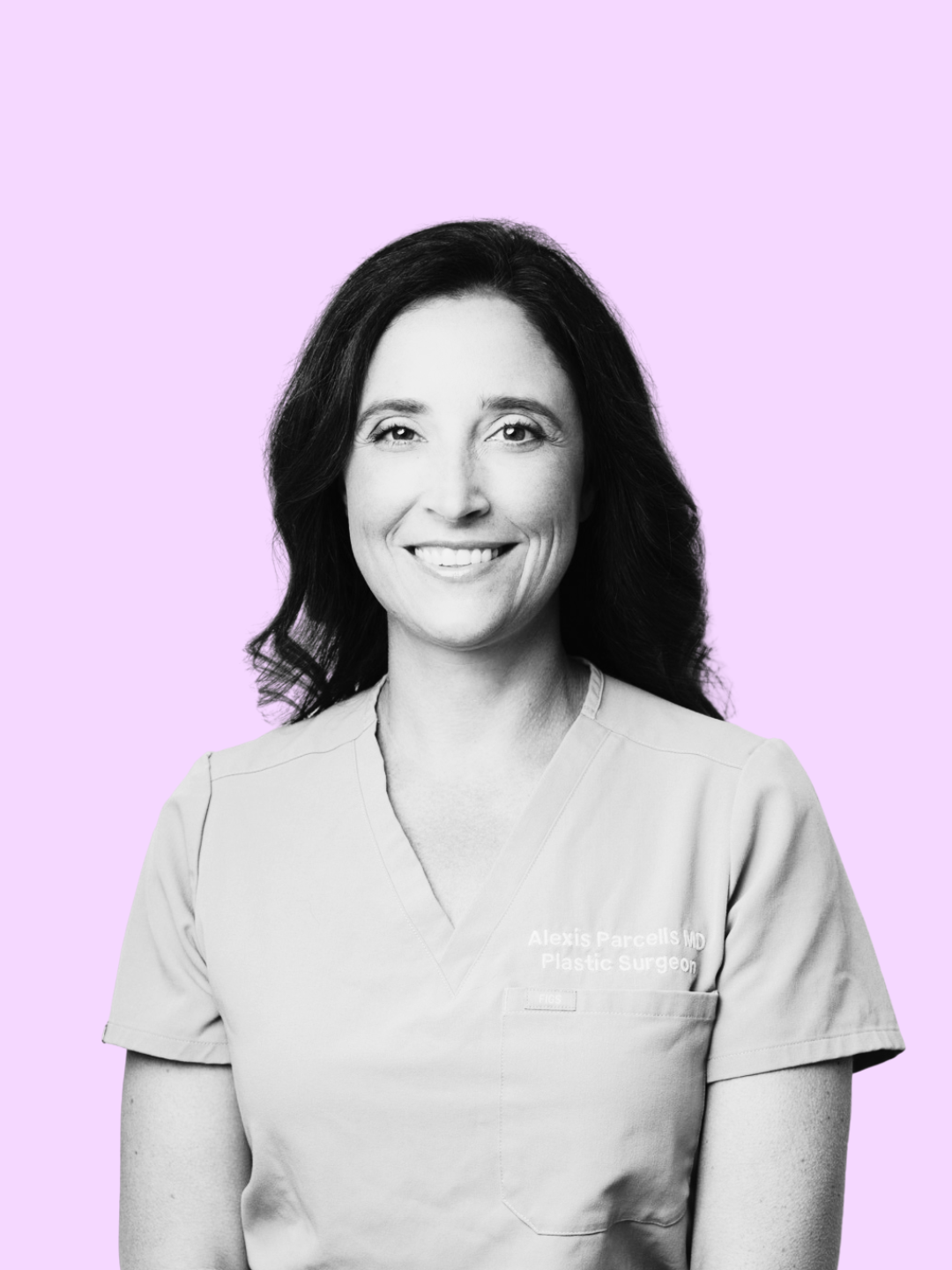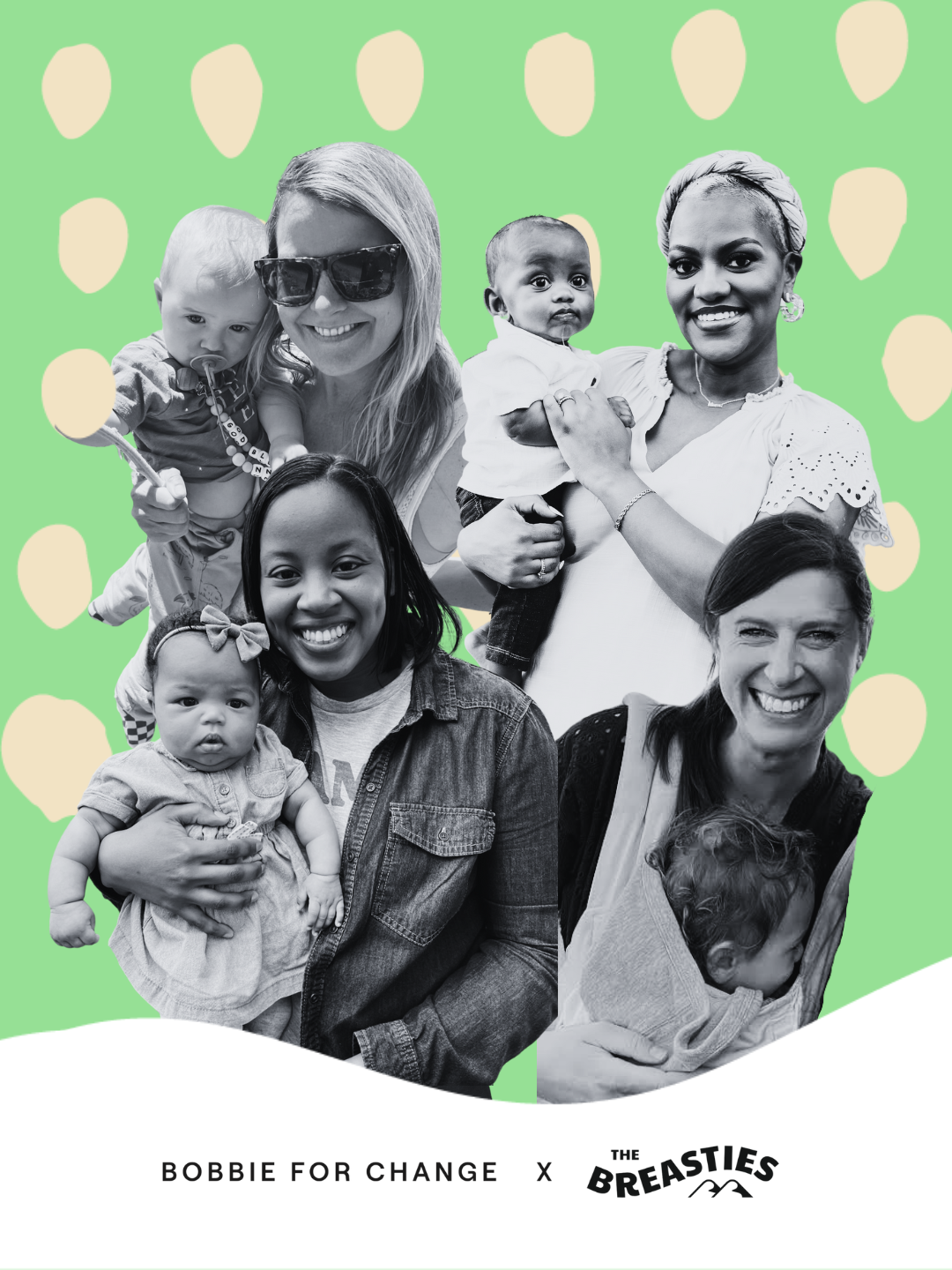Peak Partnered: This article is in proud partnership with Bobbie. Bobbie and the Breasties are teaming up to make feeding support post breast cancer surgery and treatment more equitable.
A note from lactation expert, medical reviewer, and Breastie, Jadah Parks Chatterjee:
As a nurse and lactation consultant, I have spent time with many new moms whose sole desire is to be a parent. So many new moms, who have undergone breast cancer surgery, are filled with a mix of emotions when they realize that they can’t breastfeed their babies — entirely or not at all. Unfortunately, when you undergo surgery to treat or prevent breast cancer, nobody is thinking about addressing your future feeding journey. A breast surgeon’s priority, understandably, is saving your life.
It was the same for me. Breast cancer ran in my family, so it was something my mother taught me to be proactive about even before high school. When I did find nodules in my right breast during college, I had surgery to remove twelve fibroadenomas in my breasts. Thankfully, following biopsy, all were found to be benign. I received excellent care but I later realized that there were key pieces of information and conversation that were not a part of the treatment — family planning and discussion around providing nutrition for my children.
I naturally gravitated toward learning more about the breasts and feeding the baby during my first job as a labor and delivery RN. I was fascinated by the miracle of the baby being born, however, I was really curious in learning to support parents to navigate when, how, and what to feed their babies.
Your decision or need to have surgery saved you which already makes you a great parent.
The foundation for feeding your baby is love. The care you give your baby and the support you receive make your feeding journey beautiful. Your body is stronger than it’s ever been before!
Now let’s talk about feeding that beautiful baby…
Your Breastie,
Jadah Parks Chatterjee, Registered Nurse and Lactation Consultant with Bobbie Motherboard
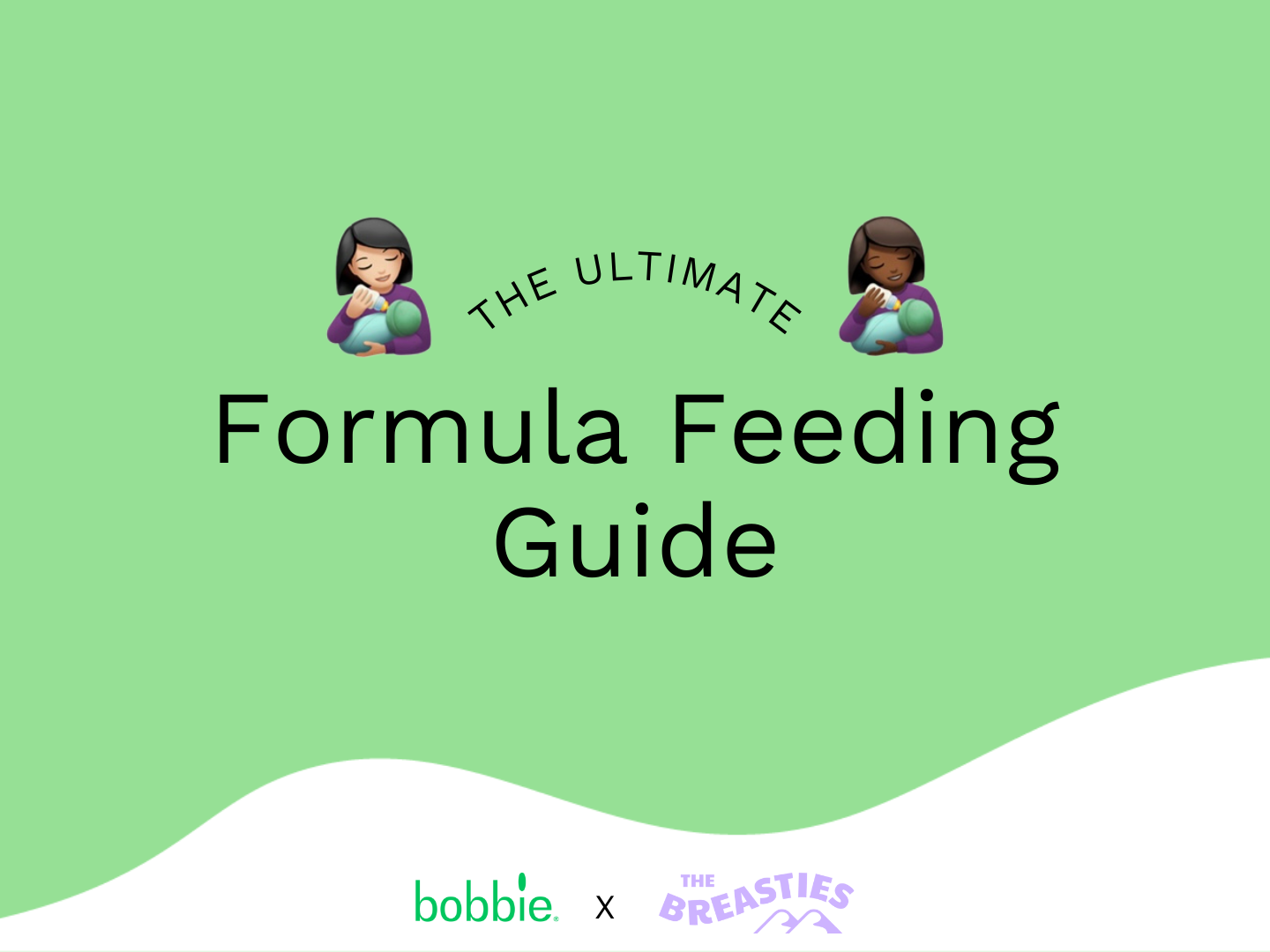
OK parents, you’ve made it. A huge congratulations to you! Baby is here and needs to eat. The medical advisors, and moms, at Bobbie want to take all the guesswork out of your formula feeding journey. Here are the steps you need to prep, mix, and store a bottle.
When you’re ready for more, download Bobbie’s The Ultimate Feeding Guide to learn how to position the baby for feedings, burp the baby and compare baby poops from month to month.
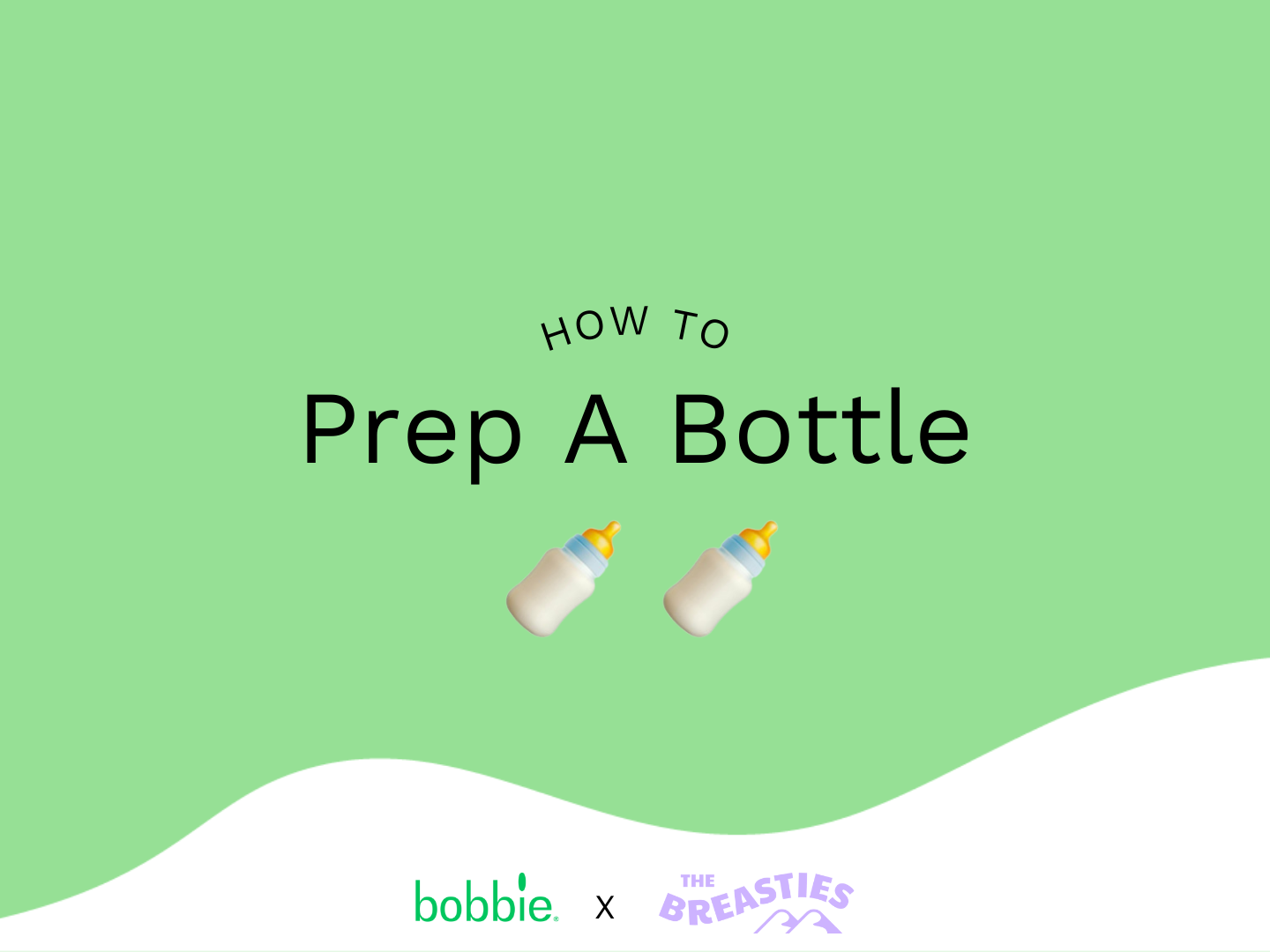
How to Prepare a Baby Bottle:
1.Read the Baby Formula Directions
No matter which form or type of infant formula you choose — powder, liquid concentrate or ready to feed — it's important that the first step you take before making a bottle for the first time is to read the instructions on the container, according to the Centers for Disease Control and Prevention (CDC). All of them. You should ALWAYS follow the recommendations of the manufacturer.
2. Sterilize and Clean Your Baby Bottles
For all babies, bottles and feeding items should be sterilized before they are used for the first time. After the first use, for most babies it's ok to clean feeding items each time they are used instead of sterilizing them, per the Mayo Clinic.
- How to sterilize a baby bottle: Sterilizing a baby bottle can be done with a sterilization machine (which uses steam), by washing items in the dishwasher with hot water and a heated/sanitizing dry cycle or by using boiling water on the stove. If you are using a sterilization machine, just follow the instructions on the package to safely sterilize a bottle.
- How to clean a baby bottle: The CDC recommends cleaning your bottle parts in the dishwasher or by hand. Make sure your bottles and nipples are dishwasher safe. If they aren't or you aren't sure, follow the directions for hand washing.
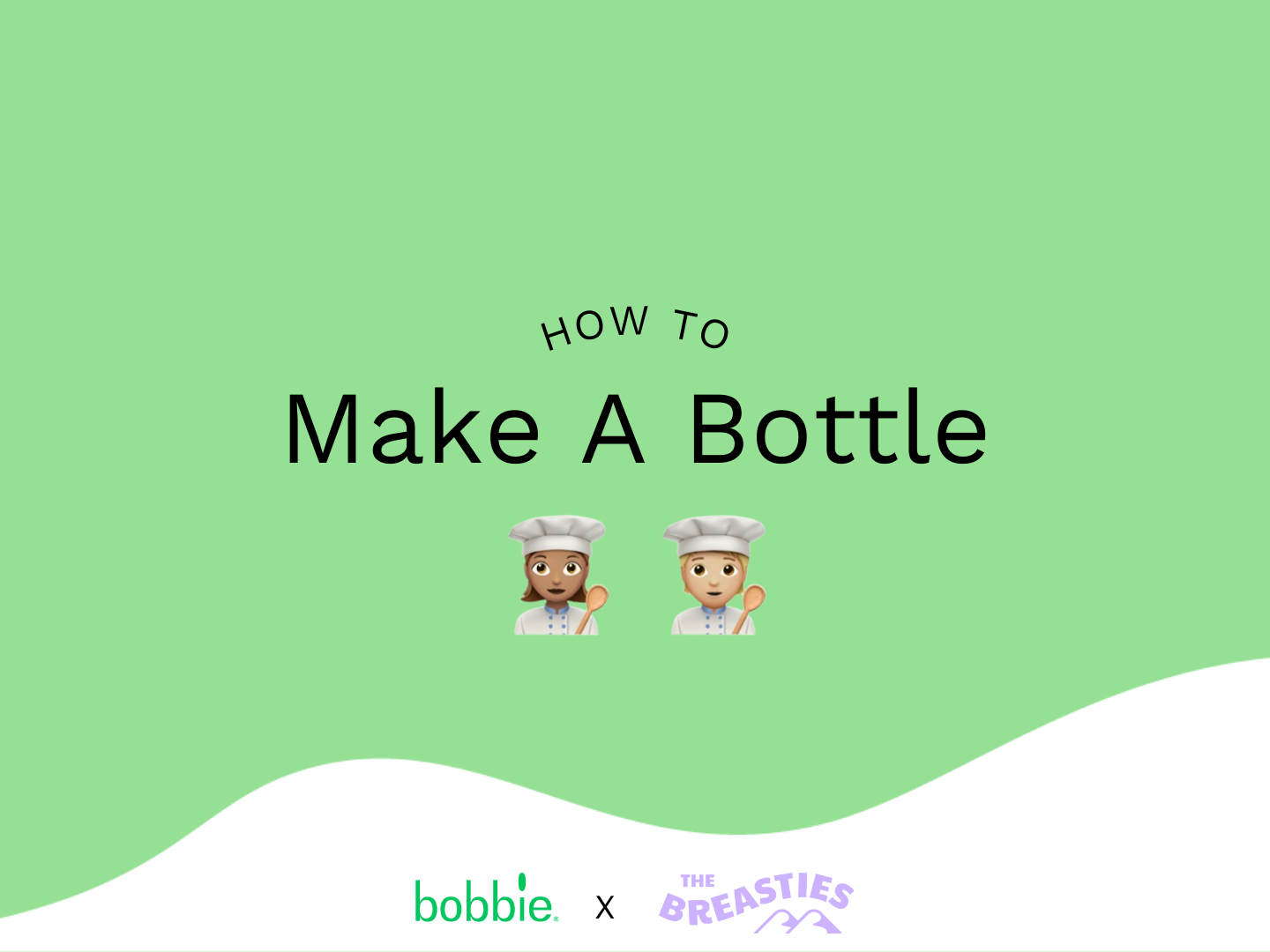
How to Make a Baby Bottle:
Follow the instructions on the formula container. You always want to follow exactly what they say, even if they are different from another formula you've used in the past.
Most powdered formulas call for one scoop of formula for every two ounces of water and most liquid concentrates call for equal amounts of water and concentrate (two ounces of water for every two ounces of concentrate). The Cleveland Clinic advises using the scoop that comes in the powder container in case it's a different size from others you may have left over from other containers.
1. Add the Water to the Bottle
It's important to add the water to the bottle first this way you can measure it exactly right. If you add powder first, this takes up room in the bottle and makes it hard to measure the water correctly. According to the American Academy of Pediatrics (AAP), most tap water is safe to use for a baby bottle (contact your local health department to verify) and room temperature water is just fine.
2. Add the Powder Formula
You should use a full, leveled scoop, but whether to pack the scoop or not pack the scoop depends on the formula brand, so check out the label on your container to find out which you should do.
3. Shake the Baby Formula
Once you have all the water and powder in the bottle, attach the nipple and cap and shake it well to mix it. It is now ready to serve.
Does baby formula need to be warmed up? No. It's perfectly fine for your baby to have a cold, room temperature or warm bottle. If your baby prefers their bottle warm it's important to make sure to warm it the right way so it doesn't get too hot and burn their mouth. Never use a microwave to heat a bottle. According to Nemours Kids Health, microwaves do not heat food evenly so they can cause hot spots that may burn your baby's mouth.
Infant formula can be warmed by using a store bought warmer, by running the bottle under warm tap water, or by placing it in a bowl of warm water for a few minutes. Be sure to give it a good shake again after it's warmed to make sure it's heated evenly and test a few drops on the inside of your wrist to make sure it's not too hot.
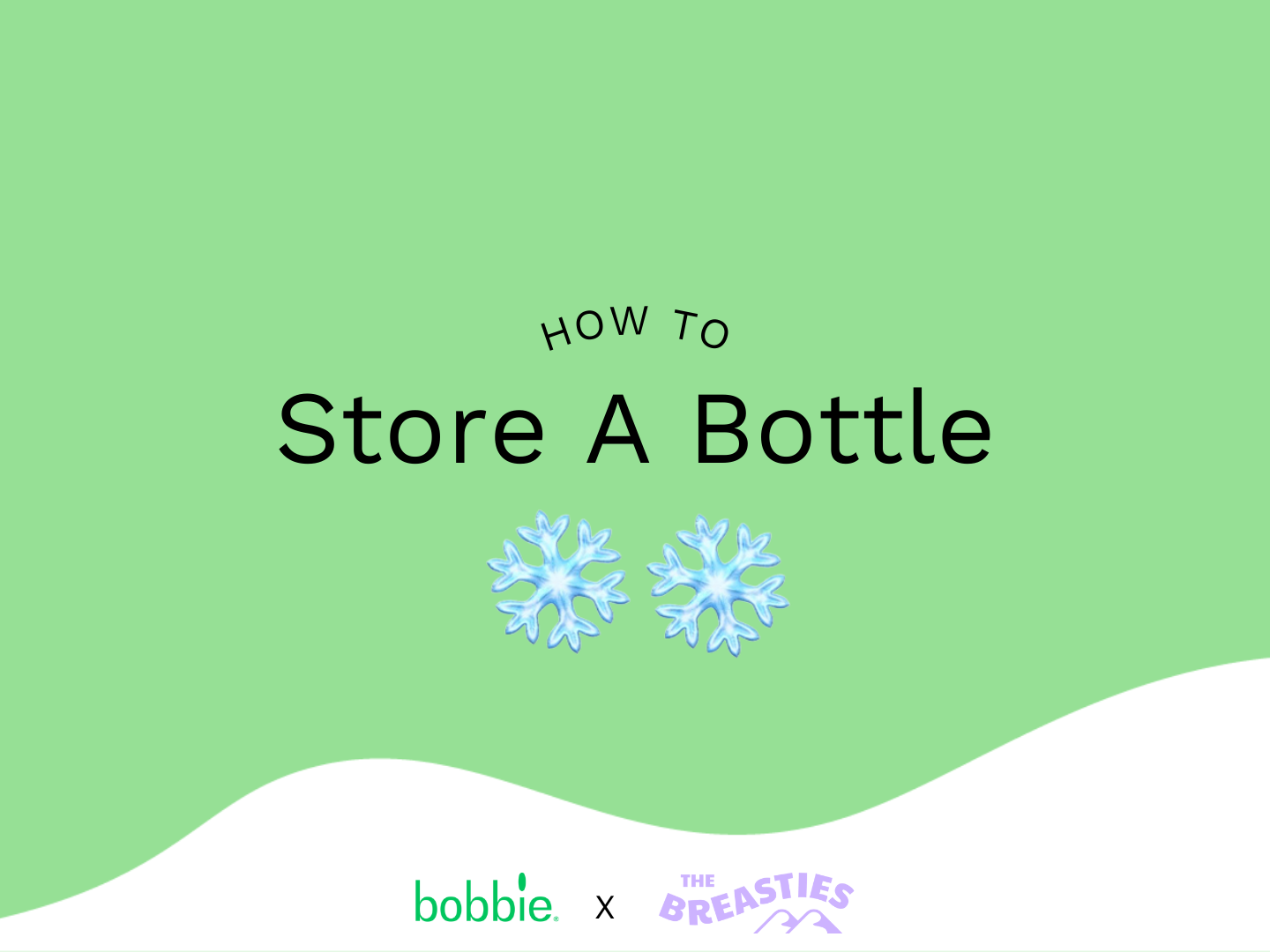
How to Batch, Refrigerate, Store, and Discard Baby Bottle Formula:
Can you create baby formula in batches? Although research shows it's best to prepare each bottle right before your baby is ready to eat, this isn't always practical for everyone. You can batch make baby formula so that it's ready to go. Formula made from powder stays good in the fridge for up to 24 hours and formula made from liquid concentrate is good for up to 48 hours.
Is it ok to refrigerate baby formula? Once formula made from powder or liquid concentrate is mixed, it should only sit out at room temperature for up to 1 hour before it needs to be refrigerated, per the AAP. As above, formula made from powder is good for up to 24 hours and formula made from liquid concentrate is good for up to 48 hours. Also remember that you can't freeze infant formula.
When should you discard baby formula? Per CDC guidelines, if there is any left over in the bottle your baby drank from, this formula needs to be thrown out. This is because it now has germs in it from your baby's mouth. Any formula that's left out for more than an hour at room temperature needs to be thrown away, whether your baby drank from the bottle or not.
Medical information by Morgan Leafe, MD, MHA, (double board-certified in Pediatrics and Clinical Informatics, medical writer for Bobbie infant formula)
Sources and Fact-Checking
- Forms of Baby Formula: Powder, Concentrate, and Ready-to-Feed. American Academy of Pediatrics. August 7, 2018.
- Infant Formula Preparation and Storage. Centers for Disease Control and Prevention. May 19, 2021.
- Formula Feeding FAQs: Preparation and Storage. Nemours Kids Health. February 2015.
- Feeding Your Infant: How to Prepare and Store Baby Formula. Cleveland Clinic. June 2, 2021.
- How to Clean, Sanitize, and Store Infant Feeding Items. Centers for Disease Control and Prevention. October 26, 2020.
- Safe Preparation, Storage, and Handling of Powdered Infant Formula. World Health Organization.
- Infant Formula: 7 Steps to Prepare it Safely. Mayo Clinic. March 4, 2021.
- Preparation and Handling of Powdered Infant Formula: A Commentary by the ESPGHAN Committee on Nutrition. Journal of Pediatric Gastroenterology and Nutrition. October 2004.
- Are You Preparing Your Baby's Bottles Correctly? American Academy of Pediatrics. October 2010.
